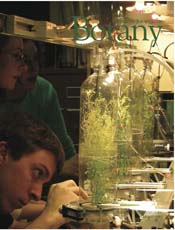Research

Our Current Work
We explore the mechanisms of adaptation across the climate range of Arabidopsis thaliana, a genome-sequenced, well-understood model organism limited at its range edges primarily by patterns of variation in water availability and temperature. We are interested in the interplay between variation in the timing of development, leaf economics, heat shock protein expression, allocation to root, leaves and photosynthetic flowering stems, and the dormancy and germination property of seeds in this annual mustard. This work is important both for developing an understanding of the constraints on the evolution of range size and for what it tells us about potential evolutionary responses to changing climates.
For this work we observe populations in both their native habitats and in precisely controlled growth chambers. The subject populations are located in northeastern Spain, from the Mediterranean shore to high in the Pyrenée Mountains along the French-Spanish border. Each of these populations is instrumented in the field to provide hourly temperature data in the microenvironment of plants.
Seeds from multiple lineages in 17 precisely georeferenced populations were brought back to the lab, where we grow these genotypes under precisely controlled conditions in our growth chambers. We use infra-red gas analysis and fluorometry to measure gas exchange and photosynthesis, isotopic analysis for integrated water use efficiency, various biochemical and molecular genetic approaches to measuring heat shock protein expression and other aspects of thermal tolerance, and multivariate statistical and quantitative genetic measures to understand the evolutionary implications of the patterns of variation we observe.
This research is funded by grants from the U. S. National Science Foundation
and the Ministerio de Educación y Ciencia, España.
